In this Article
Toggle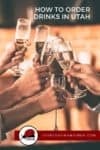


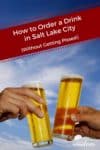
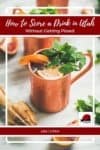

The liquor laws in the Beehive State are some of the most restrictive in the United States. Drinking in Utah can often put an unexpected twist on Happy Hour or a night out to watch the big game. Here’s what you need to know to successfully score a drink in Utah.
When I’m at home, it’s easy to take a glass of red wine to bed with me. I simply pour 6 oz to 8 oz of Merlot, Pinot, or Cabernet into a glass in my kitchen and carry it to my bedroom where I sip it while reading before lights out. But drinking in Utah, where I spend more than one month a year with my job, is a lot harder. I can’t enjoy a glass of wine in my hotel room at bedtime without planning ahead. A lot.
Consistent with all states in America, you must be at least 21 years old to purchase or consume an alcoholic drink in Utah. But even if you meet that minimum age threshold, the Beehive State’s liquor laws can still be tricky to navigate.
One reason Utah has such strict liquor laws is because a majority of Utahns are members of The Church of Jesus Christ of Latter-Day Saints. While my Catholic upbringing meant I was offered a sip of wine as a second grader during my First Communion (and every church service I attended after that), members of the LDS Church abstain from alcohol.
Fun Fact: Despite their religious beliefs, I respect and admire that Utah unanimously cast the 36th (and deciding) vote to repeal national alcohol prohibition in order to curb the violence associated with bootlegging.
To help offset the costs of running EverydayWanderer.com, you’ll find affiliate links lightly sprinkled throughout the site. If you choose to make a purchase via one of these links, there’s no additional cost to you, but I’ll earn a teeny tiny commission. You can read all of the legal blah blah blah (as my little niece says) on the full disclosure page.
If you want a cold beer after a day on the slopes or a craft cocktail after working your way through your bucket list of awesome things to do in Utah, these six tips will help you navigate the fine art of buying alcohol under Utah drinking laws.
1. Pay No Attention to the Bartender Behind the (Zion) Curtain
Until recently, any Utah-based restaurants with a liquor license had to prepare alcoholic drinks behind a Zion Curtain. These “solid, translucent, and permanent” partitions are usually made of frosted glass and mandated by the State of Utah to reduce excessive drinking by keeping alcohol out of the sight of guests who choose not to consume alcohol.
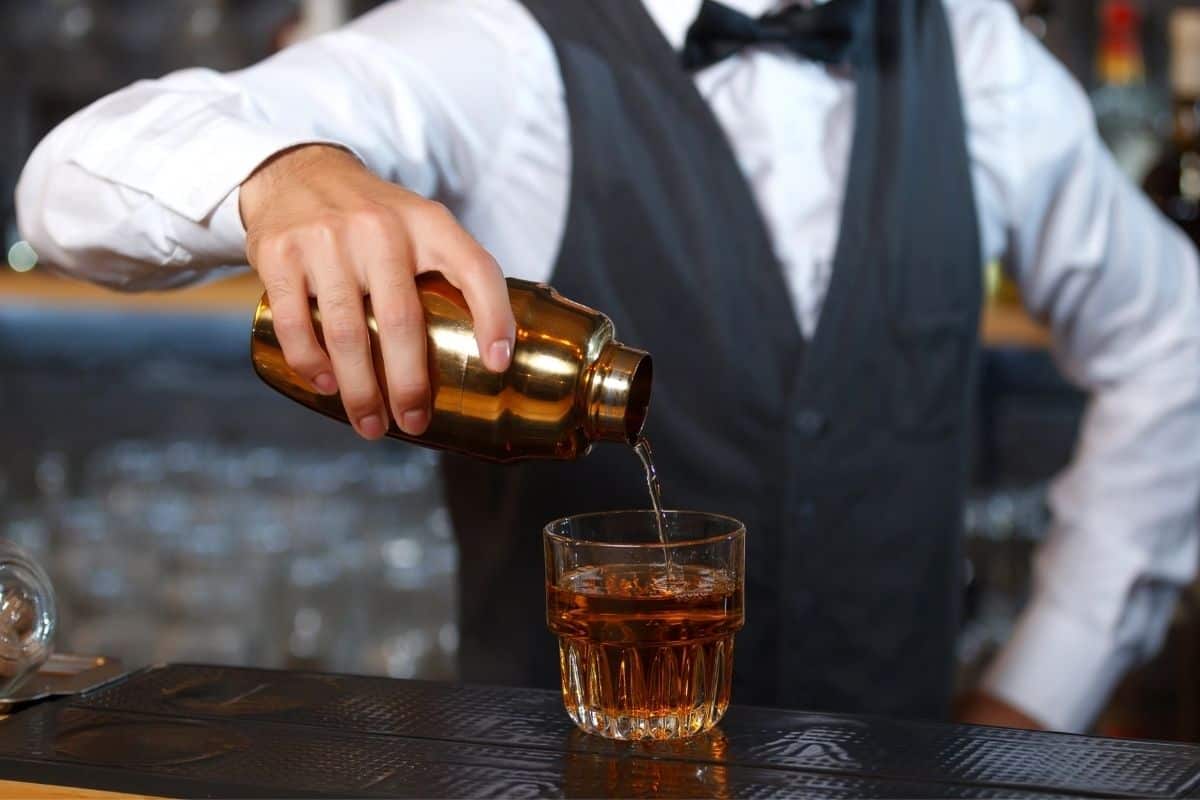
Beyond my co-workers who are members of the LDS Church, I have worked with several people throughout my career who don’t drink in Utah. Or anywhere else. Additionally, my son is a teetotaller. All of them seem confident in their decisions not to drink and are unphased by either a Zion Curtain or others at the dinner table enjoying a cocktail. The spirit behind this law seems as logical as one requiring that all tattoos be covered up to reduce the likelihood that I’d suddenly run out and get a full sleeve tattoo.
Fun Fact: The 2002 Winter Olympics held in Salt Lake City played a big role in relaxing some of the alcohol laws in the state.
Fortunately, as of the Spring 2017 legislative session, the Zion Curtain laws in Utah are being revoked and this requirement is being removed from restaurants and pubs where it previously applied. Now when you order a drink in Utah, it’s okay for it to be prepared in full view rather than behind the Zion Curtain.
Related Article: How to Ruin a Day of Wine Tasting in 5 Easy Steps
2. Would You Like Fries with That?
Between a full day in the office and a business dinner at night, I often meet up with co-workers when I’m in Salt Lake City. But it’s not as easy as in most other states to meet in the hotel bar and have a drink in Utah before we all go our separate ways for dinner. Why? Because if your hotel “bar” is licensed as a restaurant, you must order food with any drink in Utah.

And when you order a food item, know that it can only be shared between two people. Here’s a real-life example from my recent stay in Salt Lake City:
My co-worker, Suzanne, and I joined three other co-workers already at a table in the hotel bar (which is zoned as a restaurant). At the table, Jim was drinking a bottle of beer, Diane had a glass of red wine, and Allison was sipping a Diet Coke.
Waitress (passing out silverware and napkins to all five of us): I’m not sure how many people are eating.
Suzanne: Oh, we’re not eating, we’re just having one beer before we go out to dinner.
Jim: Yeah, but you’re in Utah, so you have to order food. I already have a cheese plate coming.
Waitress (to Suzanne): What would you like to drink?
Suzanne: I’ll have the same beer as Jim.
Waitress: And what would you like to eat with that?
Suzanne: Jim already ordered a cheese plate.
Waitress: Yes, but only two people can share a food item per Utah state law, so you’ll need to order another food item if you order a beer because the cheese plate is already associated with the gentleman with the beer and the woman with the wine.
Suzanne: Okay, nevermind. I’ll just have a glass of ice water.
On the plus side, if you need to order food with your drink in Utah, there are a number of amazing restaurants in Salt Lake City.
Enjoying This Article?
Sign up for the newsletter!
Thank You for Subscribing!
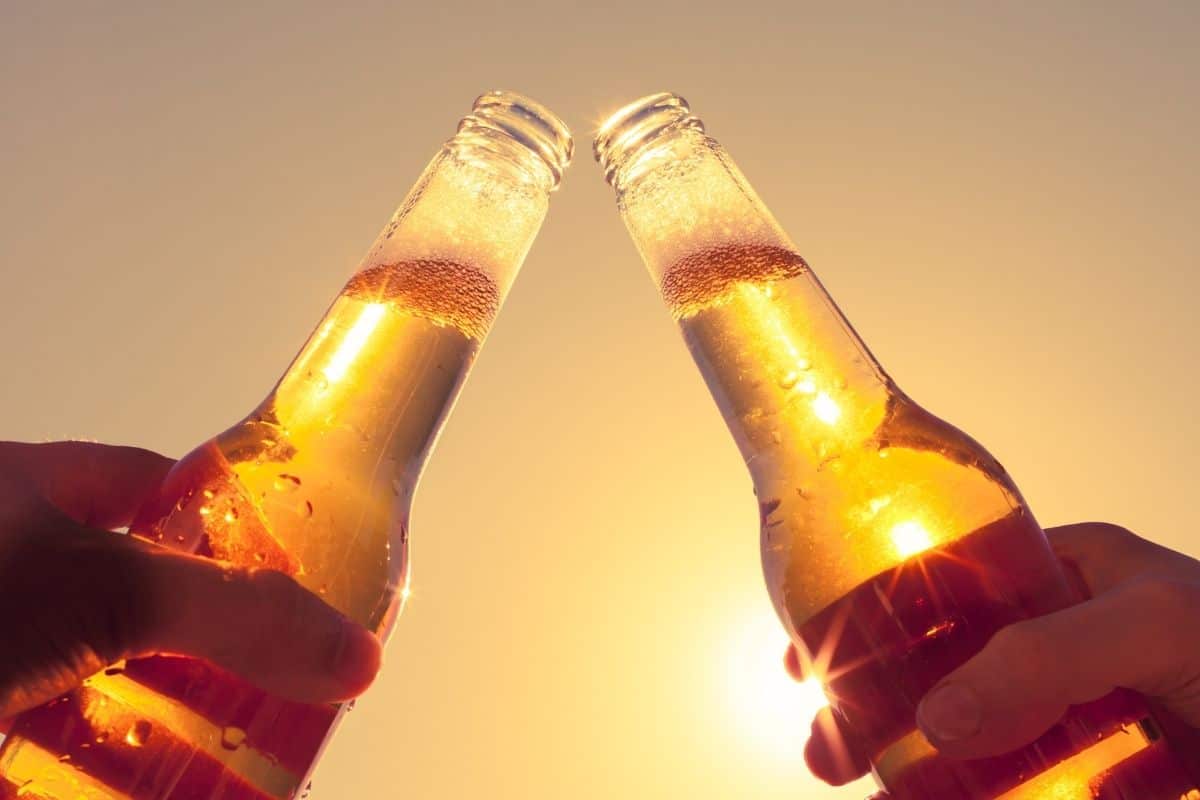
3. I’ll Have Another (Unless It’s a Drink in Utah)
If you happen to be enjoying the hometown baseball game on the big screen while on a business trip in Salt Lake City or cheering on the Jazz, don’t even think of ordering a second beer until every drop of your existing beer is consumed. That’s right. Although it may take your server another 10 to 15 minutes to get back to your table and you only have a sip or two left, you cannot order another drink in Utah until your existing drink is completely finished. So, bottoms up! (And go team!)
Sage Advice: When adjusting to higher altitudes, like when I travel from Kansas City to Salt Lake City, it’s best to limit your alcohol. Get answers to all of your embarrassing altitude sickness questions in this related article.
4. A Chemist’s Precision
State law dictates exactly how much alcohol can be dispensed into a drink in Utah. For example, if you order a glass of wine with dinner at a restaurant, expect a 5 oz pour rather than a “real glass of wine.” And expect that it will be measured out as precisely as a baker measures flour for a cake. Bartenders don’t just pour a glass of wine from a bottle in Utah. Instead, they measure it into a beaker-like measuring cup to ensure that you get 5 oz and not a drop more. On the plus side, this should aerate the wine better, so there’s that!
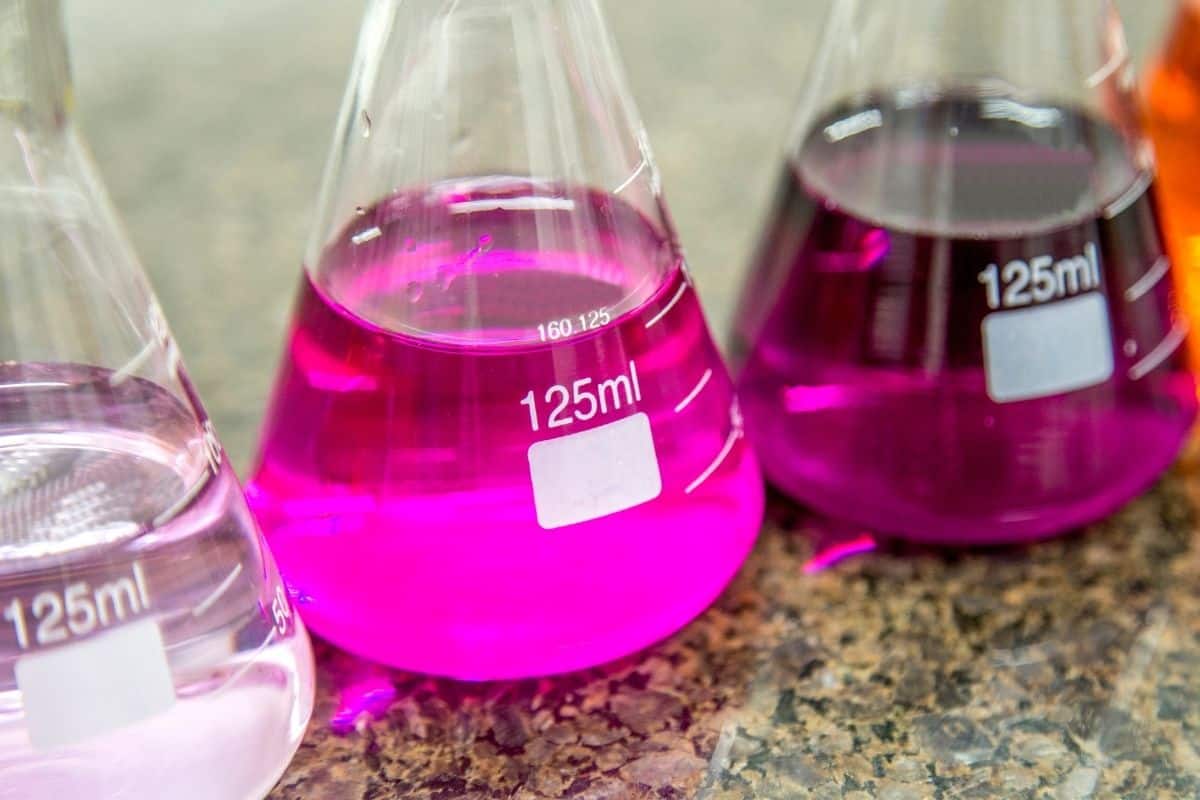
If you’re looking for a stiff drink, be warned that Utah state law requires that no more than 1.5 oz of liquor be poured into any drink. As a result, many out of town guests complain about the composition or appearance of their mixed drink. This means that if you want to use this classic margarita recipe in the state of Utah, you have a problem. To remain within the guidelines of the law, bartenders will often make smaller cocktails.
For example, cutting the same margarita recipe in half keeps it legal. But to the bar patron, it looks like they are getting a half a margarita. Bartenders will also dilute cocktails to remain within the confines of the Utah state liquor laws. While crafting a gin and tonic, a Utah-based bartender might default to a gin and tonic “tall” adding much more tonic than gin to give the appearance of a full glass.
5. A Businesswoman Walked into a Bar in Utah…
…and needed an escort for her glass of wine.
The last night of my most recent trip to Salt Lake City, I wanted a glass of wine to take up to my room. I’ve spent enough time in the Beehive State to have this conversation with the front desk clerk.
Me: Hi! Is Carnegie’s Public House licensed as a restaurant or a bar?
Front Desk Clerk: This part (gesturing to a small bar a step down from the front desk) is licensed as a bar.
Me: Okay, so I won’t need to order food to get a glass of wine to take up to my room?
Front Desk Clerk: No, but to take it to your room you’ll either need to a) go back to your room, call the bar, and have them bring it to you or b) go to the bar and have a bartender carry the glass of wine to your room.
Um, okay.
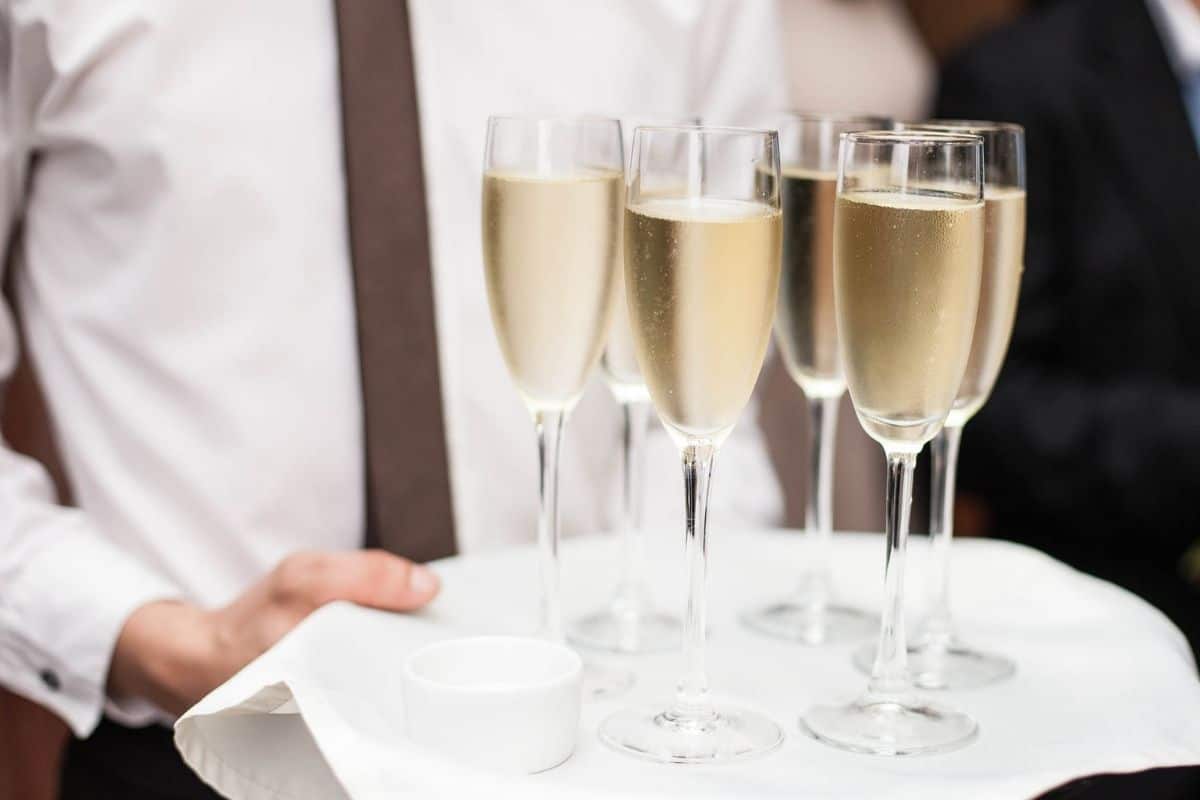
Since I was already right there, it seemed to make the most sense to just walk ten feet and speak to the bartender rather than go back to my room. I think it’s important to note that, while he escorted me back to my room, carrying my glass of Cabernet on a round tray, he never watched me enter my room nor did he see who was in my room. So I’m not entirely sure what purpose this law is supposed to serve, but I bet the lawmakers who came up with it must be really proud of themselves.
6. To Make a Purchase, Track Down a Utah State Liquor Store (or Package Agency)
At the end of the day, it is easiest for me to simply buy a bottle of wine and pour myself one glass each evening when I’m in Salt Lake City. But buying a bottle of wine also takes a bit of effort and planning.
The Utah State Bureau of Investigation says it’s illegal to bring alcohol into Utah from another state. This includes other beers, all wine, and spirits. That means it’s technically illegal to pack a bottle of wine in your suitcase or drive a container into Utah from Colorado, Nevada, Arizona, New Mexico, or any other neighboring state. And if you’re thinking of moving to Utah, plan on canceling your wine club membership!
You can only purchase alcoholic beverages — other than <5.0% beer — at a state-run liquor or package store. So don’t expect to pop into a convenience store, Target, or grocery store and grab a bottle of wine. Once you’ve located one of Utah’s monopolistic, state-run liquor or package agencies, be advised that they have limited operating hours. And liquor sales are forbidden on Sundays, legal holidays, and when voting booths are open.
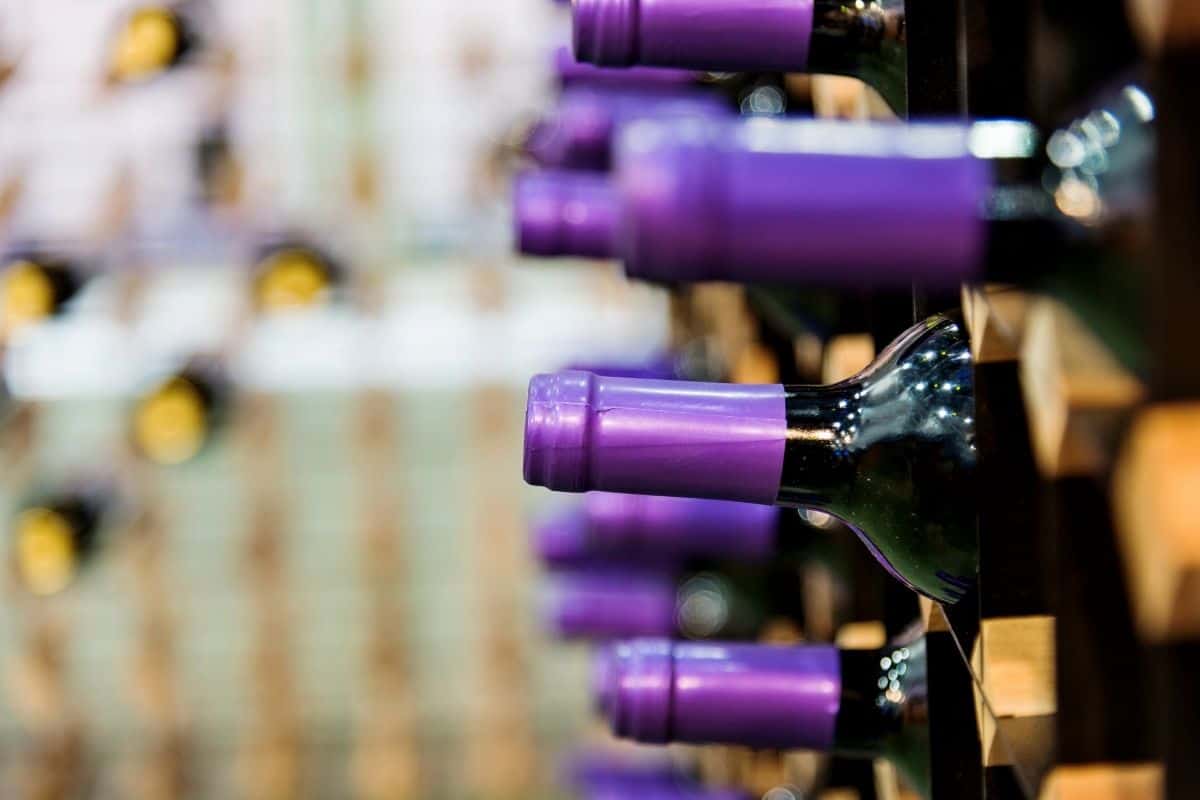
Fun Fact: Utah is one of 18 “control states” meaning that the state government has a monopoly over the wholesaling and/or retailing of some or all categories of adult beverages. In Utah, all alcoholic beverages stronger than 5% beer (also known as “heavy beer”) are sold in state-run stores.
Upon entering a Utah state liquor store, expect to pay quite a bit more than you do back home, especially if you live in one of the 32 states with limited state control. At Utah’s state-run liquor stores, I’ve seen wine priced as much as 50% more than at home. A bottle that is typically $10 in Missouri can easily be $15 in Utah.
Sage Advice: You should never, ever drive under the influence of alcohol! And in Utah, you’ll want to be extra mindful of your consumption because the 45th state’s drunk driving law is the toughest in the nation. As of 2017, the state’s blood-alcohol content has been lowered from 0.08 to 0.05. Therefore, I rarely order a glass of wine out at a restaurant if I’m the one driving back to the hotel.
Other Helpful Tips for Buying Alcohol in Utah
Can you buy alcohol in Utah?
Although the Beehive State has some of the most restrictive liquor laws in the Union, you can purchase alcohol in Utah.
What's the drinking age in Utah?
As with the other 49 states, you must be at least 21 years old to legally buy or drink alcohol in Utah.
Where can I buy beer in Utah?
Beer with an alcohol level of less than 5% can be purchased at grocery stores and convenience stores in Utah. However, heavy beer — which is beer with an alcohol level of 5% or greater — can only be purchased at a Utah state liquor store.
Where can I buy wine in Utah?
Wine is only available for purchase at state-run liquor stores in Utah. The same is true of all spirits — like gin, vodka, and whiskey — and stronger beer with an alcohol content of 5% or higher.
How late can you buy beer in Utah?
If want to order a beer at a restaurant, bar, or another venue, it’s typically available for purchase from 11:30 am until 1:00 am. You’ll find beer with a lower alcohol content available for purchase at grocery and convenience stores, but beer with a higher alcohol content (5% ABV or greater) can only be purchased in state-run liquor stores. State-run liquor stores in Utah are closed on Sundays and holidays.
When are Utah's state-run liquor stores open?
There are approximately 40 state-run liquor stores in Utah. They are typically open from 11:00 am to 5:00 pm (or later) depending on the location. Liquor stores in Utah are closed on Sundays and holidays.
Can you bring alcohol into Utah?
Technically, the Utah Department of Alcoholic Beverage Control (DABC) is the only entity allowed to lawfully import beer, wine, and spirits into the Beehive State. That means you cannot legally road trip home from West Coast wine country along I-80 through Salt Lake City with a case of wine.
However, if you are otherwise following the rules, this law is not strictly enforced. Be sure to keep the alcohol in your trunk, follow the speed limit, and it’s highly unlikely you will have any issues.
Have You Ordered a Drink in Utah?
Do you have any tips or tricks to share about ordering a drink in Utah? Share your experience in the comments section below.
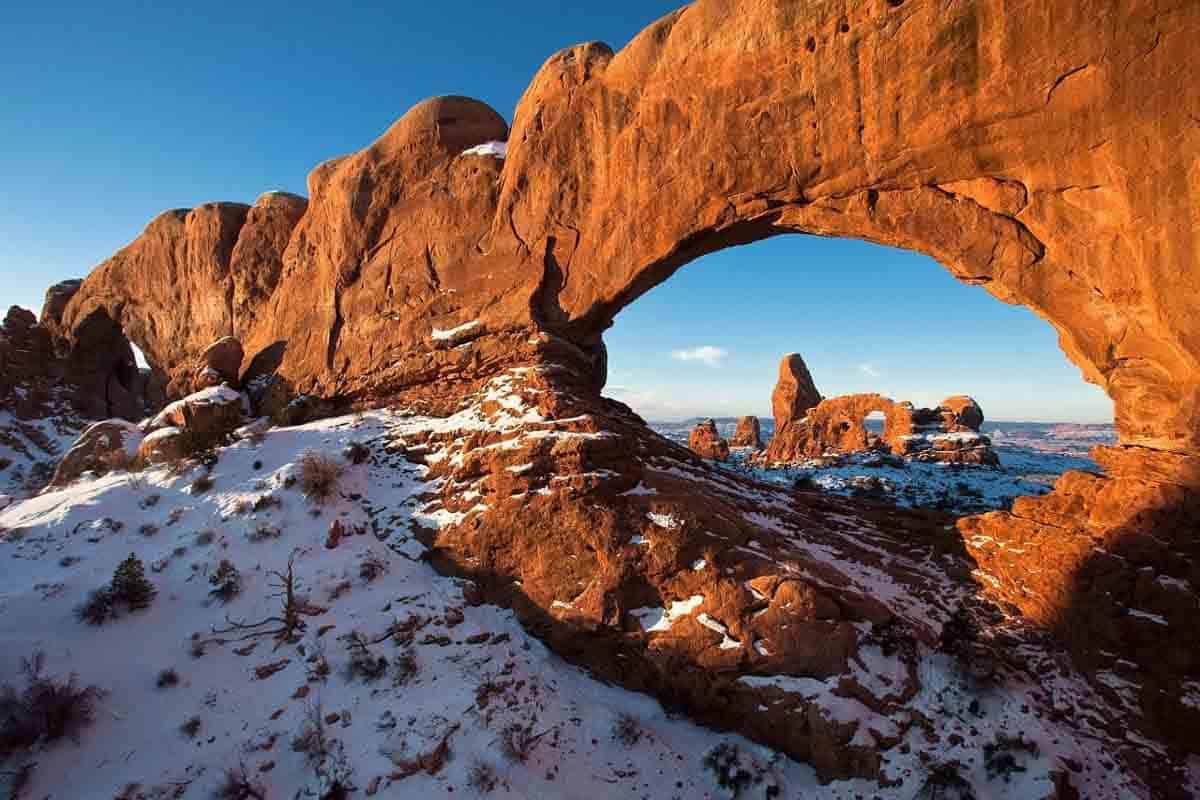
Looking for more information to plan your Utah vacation? Check out my additional recommendations to help you plan your trip to Utah including the best Utah vacation spots, what to see and do in Utah, the best places to stay in Utah, where to eat in Utah, and more!
Ready to Go?
Use These Helpful Links to Book Your Trip!
- Find low fares with airfarewatchdog and Skyscanner
- Book your plane ticket with Expedia or Kayak
- Or take the scenic route on an epic road trip in a rental car or an RV from Outdoorsy
- From hotels to private homes, find the perfect accommodation with Hotels.com or Vrbo
- Travel in style with a suitcase, carry-on, backpack, or handbag from eBags
- Save on tickets to attractions, sightseeing tours, and more with CityPASS, Tiqets, and Viator
- Don’t leave home without travel insurance from AXA
- Discover the sights, history, and culture of your destination with an interactive scavenger hunt
- Need something else to plan your perfect trip? Visit my travel resources page for more trusted partners. Happy wandering!
Thank you for sharing!

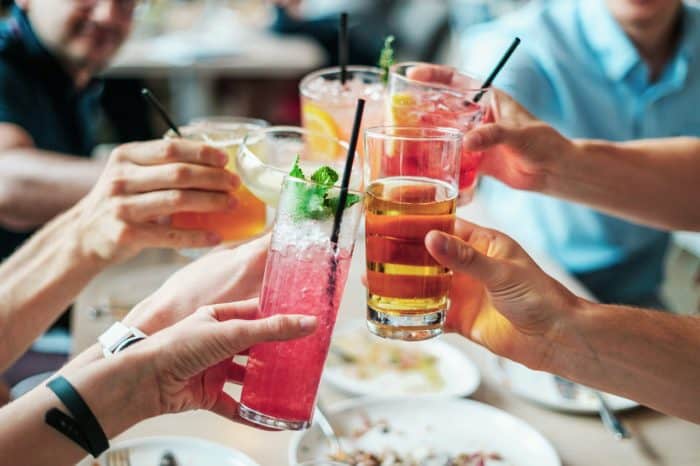


This past Legislative session (spring of 2020) there were several changes made to Utah’s liquor laws, among them was that one can bring up to 9 liters of alcoholic beverages into the State of Utah, as long as it is for personal consumption or use. Sadly, the State is no longer allowing brewpubs to sale their own products to go. Until this change, it had been possible to run into a brewpub and pickup a cold 6 pack on Sundays. The State has also done away with Growlers which were reusable glass bottles/jugs that you could have refilled with your favorite beer from a microbrewery. As for the 5 ounce pour, you need to stop going to hotel and tourist bars and go to local restaurants and bars for your wine. While they aren’t free pours that one will get in CA, they aren’t poured into a measuring device. Many places will have a wine glass that is filled to approximately five ounces. It was filled by eye and when pouring a glass of wine, the bartender may use that as a gauge, but remember that a red wine glass is shaped differently than a glass for white, so you may receive more wine, depending on the glasses being used. Lastly, the whole bit about only having 1.5 ounces of liquor in a drink is accurate up to a point, in addition to that, other liquors may be added for flavoring. This means that your margarita may have 1.5 ounces of tequila and it may have 0.5 ounces of triple second. If I remember correctly, you may have a total of two additional liquors added for flavoring. Going to small non-hotel restaurants and bars, you will find that the precise measurements aren’t used as a bottle of wine or spirits is down to the last ounce, that frequently gets added to the last order for it.
I won’t talk about the obscene mark up and taxes on liquor or that the State limits the selection of beverages available to be purchased in the State, or how there are a limited number of licenses issued for beer only establishments or beer and wine or restaurant licenses or full-service bars. These limits are based on a formula that uses a formula of one license for every so many people. The ratio varies by what type of license is being issued. I don’t know if the beer only ratio has change since the law has changed concerning 3.5 beer now that national breweries won’t produce that watered down beer. As it stands now, the State picks which restaurants can make money and which can’t. The State can’t afford to make it impossible to buy liquor or get a drink because the revenue generated by alcohol is too great. Early on during the pandemic there was talk of adding drive through windows to State Liquor stores. I know that it hasn’t passed yet, but the stores seem to be designed and built with in mind.
Good sources for much of this information include the Salt Lake Tribune, City Weekly, even the Deseret News. I don’t how often the DABC updates their website and I doubt that you would want to wade through the State Legislature’s websites.
Theres a lot of inaccuracies here, the page needs a significant update.
There is no longer a Zion curtain, beer is not 3.2, you can bring alcohol into the state for personal consumption (upto nine liters), you can but wine/liquor from other locations other than state liquor stores (package agencies). Even the ‘chemist precision’ section is not accurate.
Hi Stuart! Thanks for visiting my site! Regarding your comment:
1. Zion curtain. Correct, it was removed in the summer of 2017. That’s why my article says, “Until recently, any Utah-based restaurants with a liquor license had to prepare alcoholic drinks behind a Zion Curtain.”
2. 3.2% beer. Looks like the latest laws allow beer up to 5% to be sold at grocery and convenience stores. I’ll update. Thanks!
3. Bring alcohol in from other states. I just reread the FAQs at the Utah State Bureau of Investigation and it clearly states, “It is ILLEGAL to go to another state, purchase the booze and bring it back to Utah.” If you feel this is not correct, I’d LOVE to learn more about your source and make any updates needed.
4. Package agencies. Yup! That’s why my article says “state-run liquor or package stores” with a link to ABC’s find a store page.
5. Chemist precision. Based on multiple experiences after spending roughly six weeks a year for the past three years (pre-Covid) in Salt Lake City, I promise you this is exactly how many drinks were prepared. Perhaps it’s not done 100% of the time at every venue that serves alcohol, but it absolutely DOES happen.
Take care!
Very interesting. I’ve stayed at Hill Air Force Base near Salt Lake City for business, but I guess I didn’t drink because I don’t remember any of this. Or maybe the base has different rules since it is federal land. Anyway, great info!
I had heard that Utah’s alcohol laws were pretty strict—literally did NOT know they had to measure wine into a beaker before pouring!! In Wisconsin, an underage person can be served alcohol and go into bars if with their parent/legal guardian, or spouse, is with them lol. So cool to learn how different all of these states are!
I always find it fun to sit back at a table in the hotel lobby and watch the newbies sitting at the bar wrap their head around the rules. It’s always extra fun if the guest is from Europe and not another US state! 🙂
Wow! I had no idea! Other parts of the U.S. are truly a different world! I am from a fairly small town in Central NJ that just opened its THIRD liquor store!! Now, I am prepared for traveling to Utah! Thanks for the entertaining post!